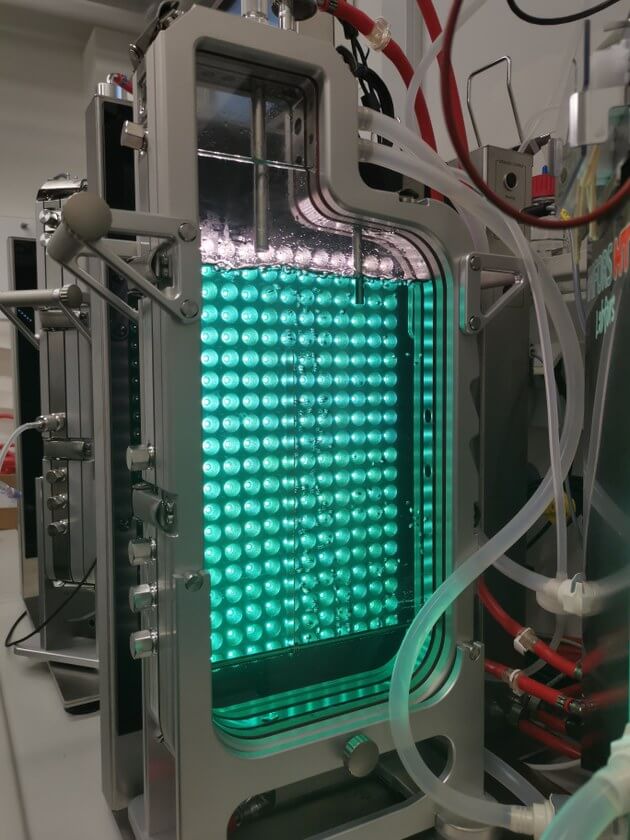Researchers were able to understand the biosynthesis mechanisms for the production of the natural substance cyanobacterin (cyanobacterin) produced in small quantities by cyanobacteria
[Translation by Dr. Moshe Nachmani]

Researchers were able to understand the biosynthesis mechanisms for the production of the natural substance cyanobacterin (cyanobacterin) produced in small quantities by cyanobacteria. During the study, the scientists also discovered a new family of enzymes that promote the formation of carbon-carbon bonds. As a result of their research, the biochemists significantly expanded the pool of means currently available in nature to carry out biocatalysis, while opening the hatch for the development of sustainable biotechnological applications in the fields of medicine and agriculture. The research findings have long been published in the prestigious journal Nature Chemical Biology.
The fact that nature is an excellent chemist is well demonstrated by the wide distribution of molecules known as natural substances, which are produced biosynthetically. These materials are also of great importance to us, humans. They are used in many ways in our daily lives, especially as active substances in medicine and agriculture. Prominent examples are anti-inflammatory penicillin Isolated from a species of mushroom, the substance is anti-cancer Taxol which was isolated from the tropical Pacific yew tree and the material Pyrethrin (pyrethrins) isolated from the chrysanthemum flower and which is used as a natural insecticide. The knowledge and understanding of the biosynthesis mechanisms responsible for the production of such substances in nature are essential for the development and production of drugs based on such compounds. In this context, a joint team of researchers studied the biosynthesis of cyanobacterin, which is a highly toxic substance for photosynthetic organisms and which is produced in small amounts in nature by a bacterium from the cyanobacteria family (Scytonema hofmanni). As part of their research, the biochemists not only succeeded in deciphering the biosynthesis of this natural substance for the first time ever, but they also discovered a new enzymatic process for the creation of carbon-carbon bonds.
This research was conducted thanks to the combination of modern tools from separate scientific fields such as bioinformatics, synthetic biology, enzymology as well as biochemical analytics. The researchers' focus was on how the central part of the material's hydrocarbon chain was formed. The genes that the researchers estimated to be responsible for this were first cloned by an analytical method known as 'Direct Pathway Cloning' (DiPaC) and then operated in the bacterium Escherichia coli which is used as a cellular factory. This method is a new method in the field of synthetic biology and was developed by Professor Tobias Gulder from the University of Dresden. "This method allows us to transfer complete biosynthetic pathways for the production of natural substances into the host systems (recombinant) in a particularly fast and efficient manner," explains the lead researcher. Next, the researchers examined the separate steps essential to biosynthesis by further producing all of the key enzymes within the Escherichia coli host system, isolating these enzymes and examining the function of each one. In the course of their research, they came across a previously unknown family of enzymes whose name was unknown furanolide synthases. These enzymes are able to encourage (catalase) the creation of carbon-carbon bonds within a unique mechanism. In further experiments on these enzymes it was discovered that they are effective in biocatalysis, a fact that makes them especially promising candidates to be used in biotechnological applications. "Thanks to these enzymes, we received enzymatic tools that will allow us to develop more environmentally friendly methods for the production of biologically active compounds in the future, thus making a significant contribution to the achievement of a more sustainable chemistry," explains the lead researcher.
In the next step, the researchers turned to look specifically for these new biocatalysts in other organisms as well, and thus they found additional members of this new family of biologically active substances, and along the way also developed biotechnological production methods based on the natural substance cyanobacterin. "Our research paves the way for the comprehensive development of a fascinating family of natural substances for diverse applications in the fields of medicine and agriculture," the researchers explain.
The article is about the research
More of the topic in Hayadan:
